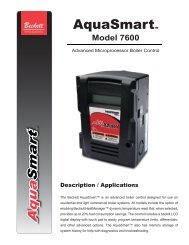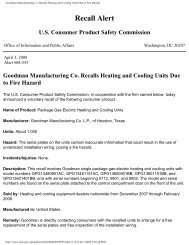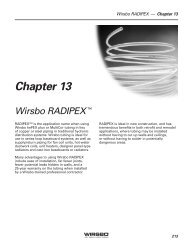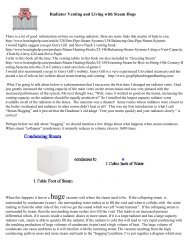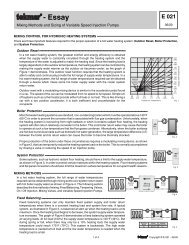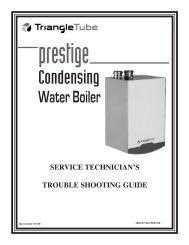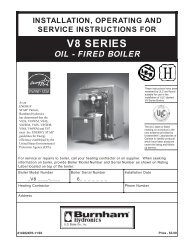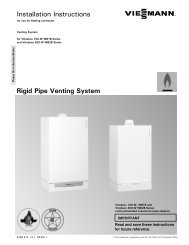You also want an ePaper? Increase the reach of your titles
YUMPU automatically turns print PDFs into web optimized ePapers that Google loves.
INTRODUCTIONThe end result will be a well working, quiet and captive air free systemwith no consumer complaints or callbacks. In final review, the term“pumping away” means pumping away from the expansion or compressiontank.Pressure Reducing Valve Placement...Point of nopressure changeI would be lax at this point if I failed to mention the proper placementof the system pressure-reducing valve. As I described in the previousparagraphs, the function of the expansion tank is to try and keep thesystem pressure as close to static fill pressure as possible. The job ofthe pressure reducing valve is to reduce the incoming building waterpressure to the desired static fill pressure of the boiler and heatingsystem. Most are preset to a static fill pressure of 12-15 psi as are theprecharge sides of the expansion tanks. Whatever static fill pressurehappens to be is what the air charge in the expansion tank should be.Interestingly enough, if you could shrink yourself down and get into thesystem piping, you would find that there is only one place in that wholesystem where the pressure never changes when things are beginningto run or are already running. That one place happens to be at thepoint where the expansion tank is attached to the system piping whichusually is some sort of an air removal device such as an air scoop.Bear in mind now that if you connect the pressure reducing valve atnearly any point in the system, except one, it will encounter either anincrease or decrease in pressure. If it happens to be the latter it willintroduce more water pressure to fill that void resulting in a somewhathigher static fill pressure than desired that you will never get rid of dueto an internal check valve inside the valve. That one place you shouldmount the pressure reducing valve happens to be between the expansiontank and whatever it is connected to because that is the onlyplace where the pressure really never changes. The end result will beproperly regulated system pressure, little if no phantom pressure riseand increased fuel savings.Near Boiler Piping...Remember what boilers need!There are endless types of various system piping methods employingcirculators, zone valves, mixing valves and other system devices. Inaddition to this there are several controls, both aftermarket and proprietary,to establish better system efficiency levels14



